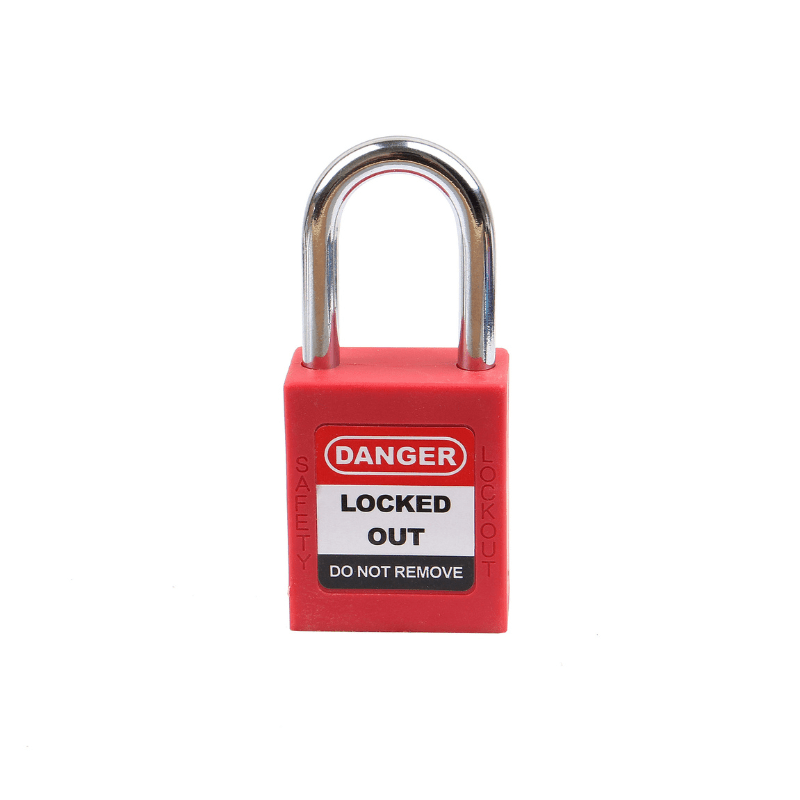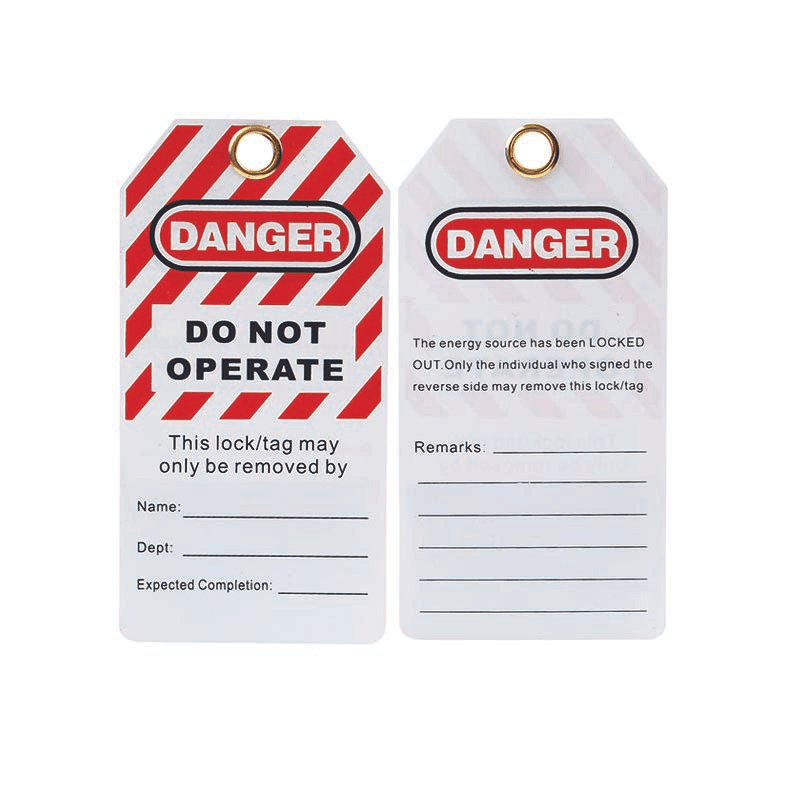Ensuring workplace safety is a paramount concern for industries across Europe. One of the critical aspects of maintaining this safety is adhering to Lockout/Tagout (LOTO) practices, a set of procedures designed to safeguard employees from the unexpected energization or startup of machinery and equipment. This blog post delves into the legal requirements for LOTO across various European countries and illustrates how The Lock Box's range of products not only meets these standards but also champions the cause of compliance and worker safety.
Understanding LOTO
Before we navigate the legal landscape, let's understand what LOTO entails. LOTO stands for Lockout/Tagout, a safety procedure used in industry and research settings to ensure that dangerous machines are properly shut off and not started up again before the completion of maintenance or servicing work. It involves controlling hazardous energy sources, making it a vital practice for preventing accidents and ensuring worker safety.
The European Legal Framework for LOTO
The European Union (EU) has established a comprehensive legal framework to ensure workplace safety across its member states. This framework encompasses various directives and standards, each contributing to a cohesive strategy aimed at minimizing occupational hazards, particularly those associated with the control of hazardous energies. The foundation of this framework is built upon key directives such as 2009/104/EC and supported by international standards like EN ISO 14118, which together create a harmonized approach to Lockout/Tagout (LOTO) procedures.
Directive 2009/104/EC: Ensuring Equipment Safety
Directive 2009/104/EC, often referred to as the "Use of Work Equipment Directive," is pivotal in setting the baseline for safety and health requirements concerning the use of work equipment. This directive is crucial for the implementation of LOTO procedures as it mandates the integration of devices that can visibly separate equipment from its energy sources. The directive's emphasis on visible separation devices is instrumental in preventing accidental energization or startup, thereby safeguarding workers during maintenance or repair activities.
Key aspects of Directive 2009/104/EC include:
- Equipment Isolation: The directive requires that all equipment capable of being isolated from energy sources must have provisions to do so. This isolation must be clearly visible to ensure that workers are aware of the equipment's status.
- Maintenance Safety: It emphasizes the need for safe maintenance practices, advocating for measures that prevent equipment from being inadvertently re-energized.
- Worker Training: Directive 2009/104/EC also highlights the importance of worker training, ensuring that individuals involved in maintenance or interaction with work equipment are fully aware of the potential hazards and the necessary precautions.
EN ISO 14118: Standardizing Control of Hazardous Energy
EN ISO 14118 complements the EU directive by providing detailed specifications on how to control hazardous energy during machinery shutdown, isolation, and energy dissipation. This standard is integral to the LOTO framework, as it lays out the methodologies and safety requirements for preventing the unexpected startup of machinery—a core principle of LOTO procedures.
Key features of EN ISO 14118 include:
- Energy Isolation and Dissipation: The standard provides guidelines on how to effectively isolate and dissipate energy stored in machinery, ensuring it remains in a safe state during maintenance.
- Lockout Devices: It specifies the requirements for lockout devices used to secure isolation points, ensuring they are reliable, tamper-evident, and standardized across the organization.
- Tryout Procedures: EN ISO 14118 introduces the concept of "tryout," a verification step where the effectiveness of the energy isolation is tested before maintenance work begins, adding an extra layer of safety.
Harmonization Across Europe

The synergy between Directive 2009/104/EC and EN ISO 14118 exemplifies the EU's commitment to harmonizing workplace safety standards across its member states. By adhering to these directives and standards, European countries ensure a consistent level of safety in handling hazardous energies, thus facilitating a safer working environment for all.
Moreover, this harmonized legal framework aids businesses operating across multiple European jurisdictions by providing a clear and consistent set of rules to follow, reducing the complexity associated with compliance and enhancing the overall safety culture within organizations.
Continuous Evolution for Enhanced Safety
The European legal framework for LOTO is not static; it evolves in response to technological advancements, workplace trends, and emerging safety challenges. Regulatory bodies and standardization organizations regularly review and update directives and standards to reflect current best practices and safety research findings. This dynamic approach ensures that the LOTO procedures remain effective, relevant, and capable of protecting workers in an ever-changing industrial landscape.
Navigating Country-Specific Regulations
While the overarching EU directives provide a harmonized framework for Lockout/Tagout (LOTO) procedures, the application of these regulations can vary significantly across different European countries. Each member state has the autonomy to interpret these directives and implement more detailed, country-specific regulations and standards. This section explores the nuances of LOTO regulations in Germany, France, and the UK, and extends the discussion to include Italy and Spain, offering a broader perspective on the diverse regulatory landscape within Europe.
Germany: DGUV Regulations
In Germany, the Deutsche Gesetzliche Unfallversicherung (DGUV, German Social Accident Insurance) plays a pivotal role in enforcing workplace safety regulations, including LOTO procedures. The DGUV provisions, specifically DGUV Regulation 3 (Electrical Installations and Equipment), outline the requirements for the safe operation and maintenance of electrical systems, implicitly mandating the use of LOTO practices. German industries often refer to the BGR/GUV-R 113-004 (previously BGV A3) guidelines, which detail the testing and maintenance of electrical equipment, emphasizing the need for effective isolation during such activities.
France: INRS Guidelines
In France, the Institut National de Recherche et de Sécurité (INRS) is instrumental in setting occupational health and safety standards. The INRS provides comprehensive guidelines on controlling hazardous energies, including the ED 6227 brochure, which offers detailed insights into implementing LOTO procedures. These guidelines are designed to complement European directives by providing practical advice on LOTO practices, ensuring workers are safeguarded against the unintended release of hazardous energy during maintenance or servicing tasks.
The UK: HSE Standards
Despite Brexit, the United Kingdom continues to align closely with European safety standards, particularly in the realm of occupational health and safety. The Health and Safety Executive (HSE) in the UK enforces regulations that mirror the ethos of EU directives, ensuring a high level of protection for workers. The HSE's Provision and Use of Work Equipment Regulations 1998 (PUWER) and the Electricity at Work Regulations 1989 are critical to the UK's legal framework for LOTO, mandating measures to prevent the accidental or unexpected start-up of machinery and equipment.
Italy: State-Regions Agreement
Italy adheres to the State-Regions Agreement (Accordo Stato-Regioni) which, among other provisions, outlines the requirements for occupational safety training, including the safe management of hazardous energies. Italian legislation, particularly the Legislative Decree 81/2008, incorporates EU directives into national law, emphasizing the importance of LOTO procedures in preventing workplace accidents and ensuring the safety of maintenance personnel.
Spain: INSST Guidelines
The Instituto Nacional de Seguridad y Salud en el Trabajo (INSST, National Institute of Safety and Health at Work) in Spain provides guidance and resources related to occupational risks, including those associated with hazardous energies. The INSST's technical guides and standards, developed in alignment with EU directives, offer detailed instructions on the implementation of LOTO procedures across various industries, ensuring that Spanish workers are adequately protected against risks associated with unexpected energization or start-up of equipment.
The Lock Box: Ensuring Compliance and Safety
The Lock Box, with its comprehensive range of LOTO solutions, stands at the forefront of ensuring compliance with these varied legal requirements across Europe. Here's how our products align with legal standards, ensuring safety and compliance:
Diverse Product Range
Our extensive product portfolio, including padlocks, valve lockouts, electrical lockouts, and lockout stations, is designed to meet the diverse needs of European industries. Each product is engineered to comply with the EU directives and country-specific regulations, ensuring a wide applicability across the continent.
Quality and Durability
All our products are manufactured with high-quality materials, ensuring durability and reliability in industrial settings. This quality assurance is crucial for meeting the stringent requirements set forth by European safety standards.
Customization Options
Understanding the varied nature of machinery and equipment across industries, The Lock Box offers customizable LOTO solutions. This flexibility ensures that our products can be tailored to meet specific regulatory requirements, enhancing compliance and safety.
Training and Support
Beyond offering products, we provide comprehensive training and support to ensure that the implementation of LOTO procedures is in strict adherence to legal requirements. Our expert team is well-versed in European regulations, offering insights and guidance to ensure seamless compliance.
Continuous Innovation
At The Lock Box, we are committed to continuous innovation, ensuring our products and services remain at the cutting edge of safety and compliance standards. Our proactive approach to incorporating regulatory changes into our product design and functionality means that businesses relying on our solutions are always ahead in compliance and safety.
Navigating the legal landscape of LOTO in Europe requires a thorough understanding of both EU directives and country-specific regulations. The Lock Box's commitment to compliance, coupled with our extensive range of products and services, ensures that industries across Europe can implement effective and legally compliant LOTO procedures. By prioritizing innovation, quality, and customization, we not only meet the current legal standards but also anticipate future regulatory developments, ensuring our clients are always a step ahead in safety and compliance.
Safety is not just a regulatory requirement; it's a commitment to the well-being of workers. With The Lock Box, businesses across Europe can uphold this commitment, fostering a safer, more compliant, and more productive work environment.



